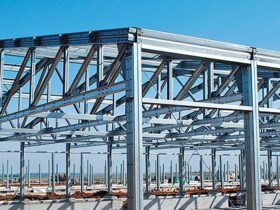The population of Amsterdam began to increase rapidly, starting around 1880, when the number of inhabitants in it was calculated in 330 thousand people. In 1921, it increased more than double. The city expansion projects were going to draw up since 1866, but very little was done in a planned manner. Housing conditions for the growing population were improved through the more dense development of the central part of the city with corps of profitable houses. As a result of overpopulation, slums were gradually created, and wealthy segments of the population, who lived earlier in the center, and often in the houses where their offices were placed and found the city with a less suitable place for residence and moved to the suburbs. Their liberated apartments began to occupy poor families. Amsterdam in this regard serves only one example of what was happening in many other large cities in Europe. The same process that took place in London has already been mentioned.
Amsterdam is located south of the merger of the river and Amstel. It developed mainly but a scheme resembling a web cut in half, formed by intersecting channels surrounded by a city wall. Such a scheme for a long time was considered a classic sample of organic layout. According to Lewis Mamford, despite her geometry, she perfectly takes into account economic and social requirements.

















Leave a Reply